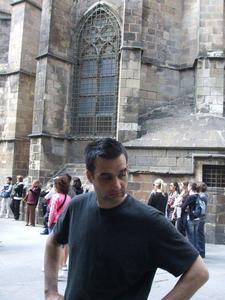23622497
English Poetry Key Words
Description
Flashcards by Matthew Gordon, updated more than 1 year ago
More
Less
|
|
Created by Oliviax
over 9 years ago
|
|

|
Copied by Matthew Gordon
over 4 years ago
|
|
Resource summary
| Question | Answer |
| Adjective | A word that describes something |
| Alliteration | Where words that are close together start with the same letter. It's often used in poetry to give a nice pattern to a phrase. |
| Ambiguity | Where a word or phrase has two or more possible meanings. |
| Assonance | When words share the same vowel sound but consonants are different. E.g 'thUmb' and 'lUng' |
| Autobiographical | Describing something that happened in a poet's life. |
| Ballad | A form of poetry that tells a story and often sounds quite musical |
| Blank Verse | Poetry written in iambic pentameter that doesn't rhyme but has a regular rhythm |
| Caesura | A pause in a line |
| Colloquial | Sounding like everyday spoken language |
| Consonance | When words have the same consonant sound but different vowel sounds E.g 'HuRT' and 'HeaRT' |
| Consonants | All the letters in the alphabet that aren't vowels |
| Contrast | When two things are described in a way which emphasises how different they are. E.g a poet might contrast two different people or two different places. |
| Dialect | A variation of language. People from different places might use different words or sentence constructions. |
| Emotive | Something that makes you feel a particular emotion |
| Empathy | When someone feels like the understand what someone else is experiencing and how they feel about it. |
| End-Stopping | Finishing a line of poetry with the end of a phrase or sentence |
| Enjambment | When a sentence runs over from one line or stanza to the next |
| First Person | When someone writes about themselves, or a group which includes them., using words like 'I' and 'my'. |
| Form | They type of poem and it's features |
| Free Verse | Poetry that doesn't rhyme or have a regular rhythm |
| Iambic Pentameter | Poetry with a metre or ten syllables - five of them stressed and five unstressed. The stressed falls on every second syllable |
| Iambic Tetrameter | Like iambic pentameter but with a metre of eight syllables - four stressed and four unstressed. |
| Imagery | Language that creates a picture in your mind. It includes metaphors and similes. |
| Internal Rhythm | When a word in the middle of a line rhymes with the last word of the line. |
| Irony | When words are used in a sarcastic or comic way to imply the opposite of what they normally mean. It can also mean when there is a big difference between what people expect and what actually happens. |
| Language | The choice or words used. Different kinds of language have different effects |
| Layout | The way a piece of poetry is visually presented to the reader E.g line length, whether the poem is broken into different stanza's, whether lines create some visual pattern. |
| Metaphor | A way of describing something by saying that it is something else, to create a vivid image. |
| Metre | The arrangement of syllables to create rhythm in a line of poetry |
| Monologue | One person speaking for a long period of time |
| Mood | The feel or atmosphere of a poem |
| Narrative | Writing that tells a story |
| Narrator | The voice speaking the words that you're reading |
| Oxymoron | A phrase which appears to contradict itself because the words have meanings that don't seem to fit together |
| Persona | A fictional character or identity adopted by a poet. Poets often create a persona so they can describe different things from a different person's point of view. |
| Personification | A special kind of metaphor where you write about something as if it's a person with thoughts and feelings |
| Rhyme Scheme | A pattern of rhyming words in a poem |
| Rhyming Couplet | A pair of rhyming lines that are next to each other |
| Rhythm | A pattern of sounds created by the arrangement of stressed and unstressed syllables, |
| Sibilance | Repetition of the 's' and 'sh' sounds |
| Simile | A way of describing something by comparing it to something else, usually by using words such as 'like' or 'as' |
| Sonnet | A form of poetry with 14 lines, usually following a clear rhyme pattern. There are many types of sonnets. They're often about love. |
| Stanza | A group of lines in a poem. Stanza's can also be called verses. |
| Structure | The order and arrangement of ideas and events in a piece of writing |
| Syllable | A single unit of sound within a word |
| Symbolism | When object stands for something else. E.g a candle might represent hope, or a dying flower could represent the end of a relationship. |
| Theme | An idea or topic that's important in a piece of writing |
| Tone | The mood or feelings suggested by the way the narrator writes |
| Voice | The personality narrating the poem. Poems are usually written either using a poet's voice, as if they're speaking to you directly, or the voice of a character. |
| Vowels | A, E, I, O, U |
Want to create your own Flashcards for free with GoConqr? Learn more.
